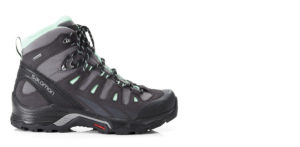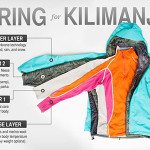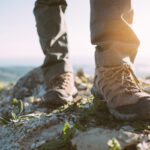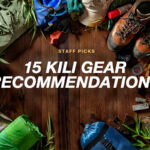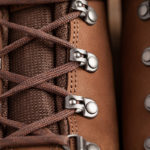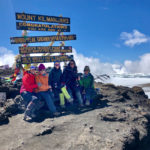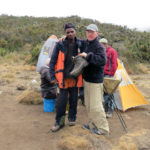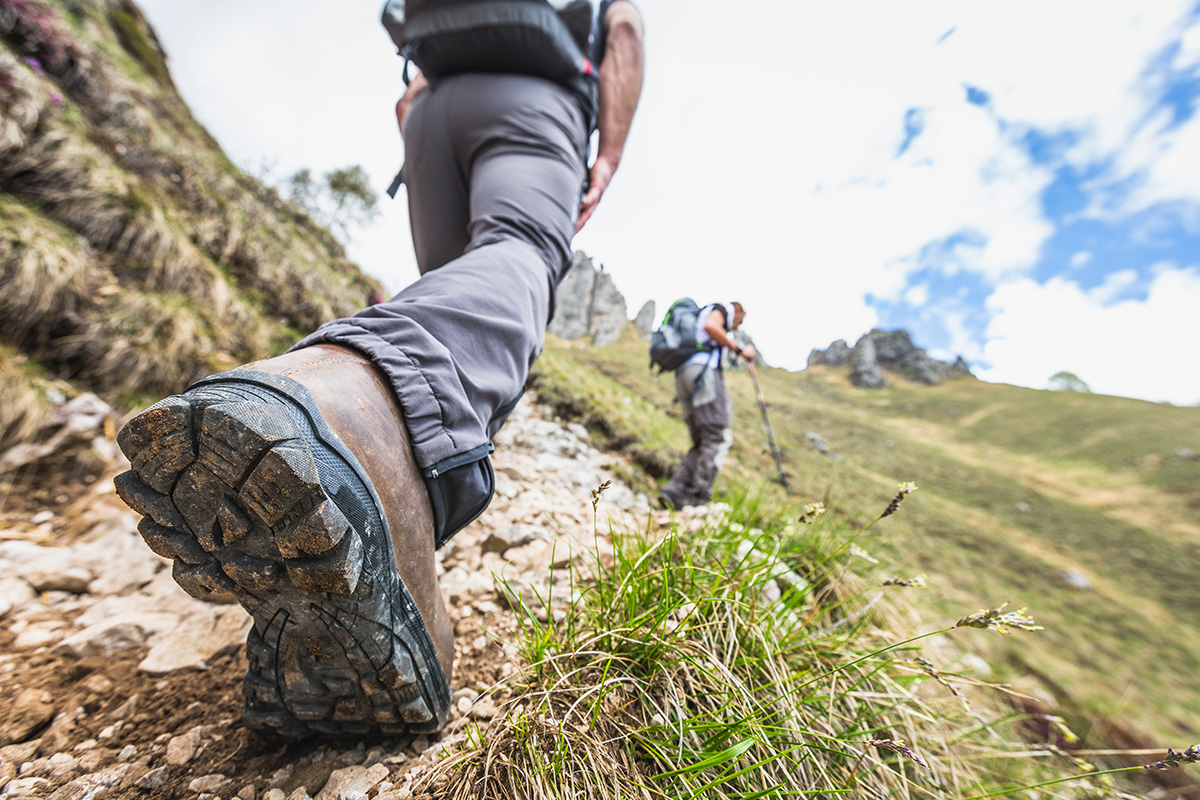
You’re about to walk over 30 miles up the tallest mountain on the continent. Trust us – your boots are your most important piece of equipment.
So, let’s talk about boots! What should you buy and how should you get them ready for the mountain?
How to Buy Boots for Kilimanjaro
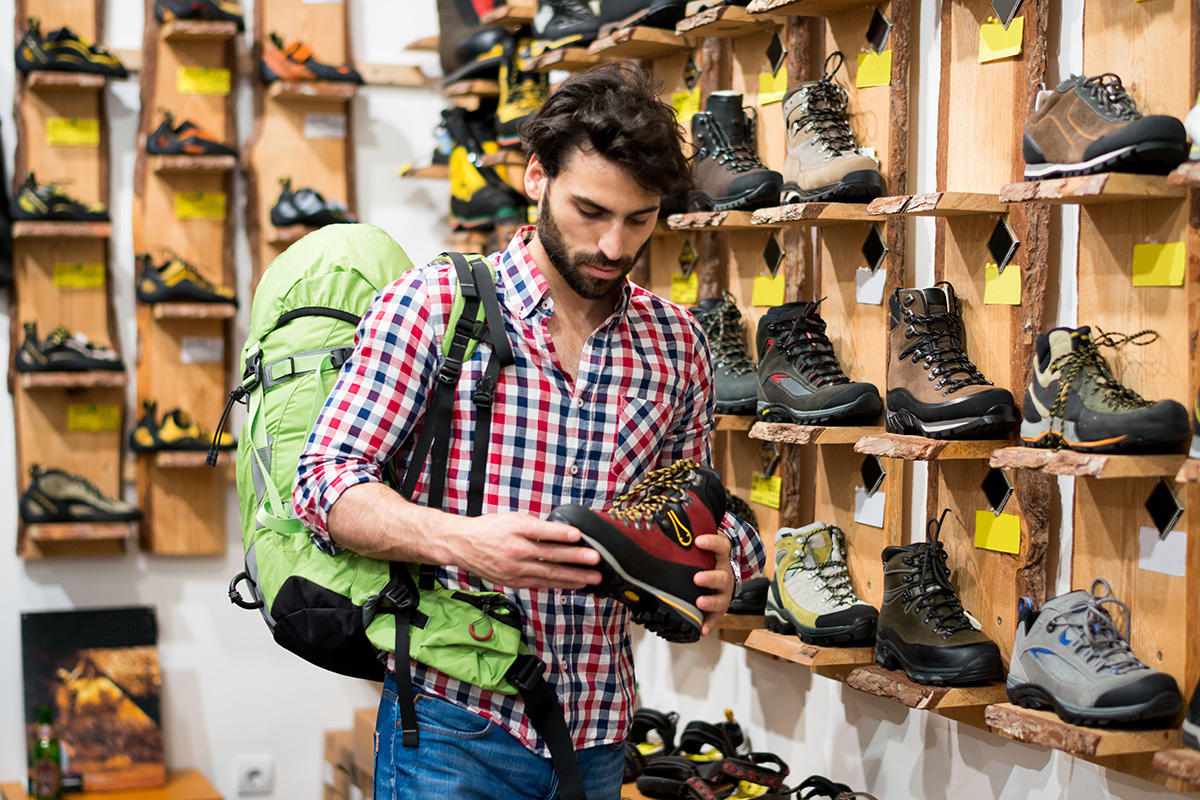
First, we recommend visiting a store that sells hiking merchandise. Many of these locations have representatives that can recommend specific brands, incline platforms for testing and a wide selection.
Don’t let any of this intimidate you! At the end of the day, there are just a handful of questions you need to ask to separate a good pair of boots for Kilimanjaro from a not-so-good pair.
- Are they waterproof?
- Are they breathable?
- Do they support your ankles well?
- Do they provide good traction?
- How much do they weigh?
- How do they fit?
Waterproofing
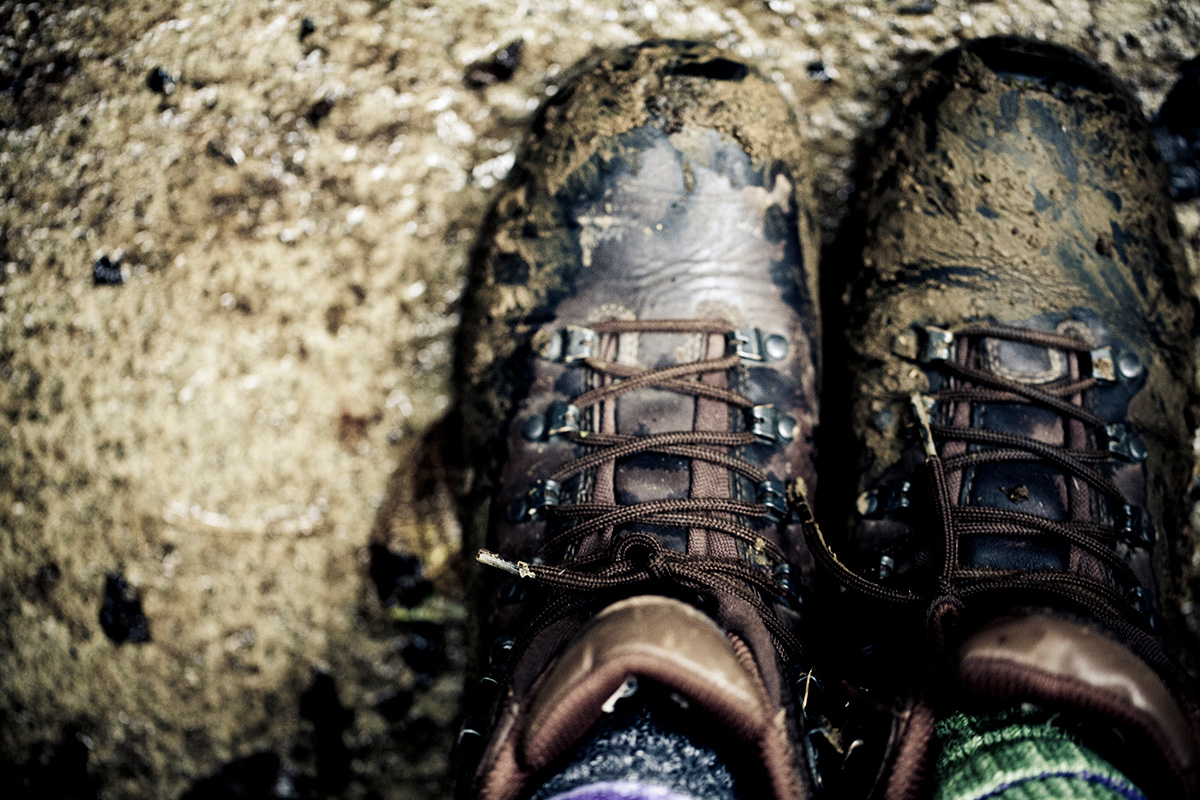
Your boots need to be waterproof. You’ll be trekking through a rainforest and very likely through rain and snow.
Don’t take waterproofing for granted with all hiking boots. There are many brands that use breathable, quick-drying materials that are not waterproof. Always double check.
Breathability
Breathable boots expend heat to keep your feet cool in hotter temperatures – like what you may encounter at lower elevations. Breathability is a nice-to-have on Kilimanjaro, but many of our favorite boots are made of waterproof and breathable materials – like Gore-Tex.
Ankle Support
The higher the cuff, the part that wraps around your ankle, the greater the support. Kilimanjaro is covered with root-strewn trails, rocky passes and icy expanses. Look for a boot with a high cuff for ample support.
Traction
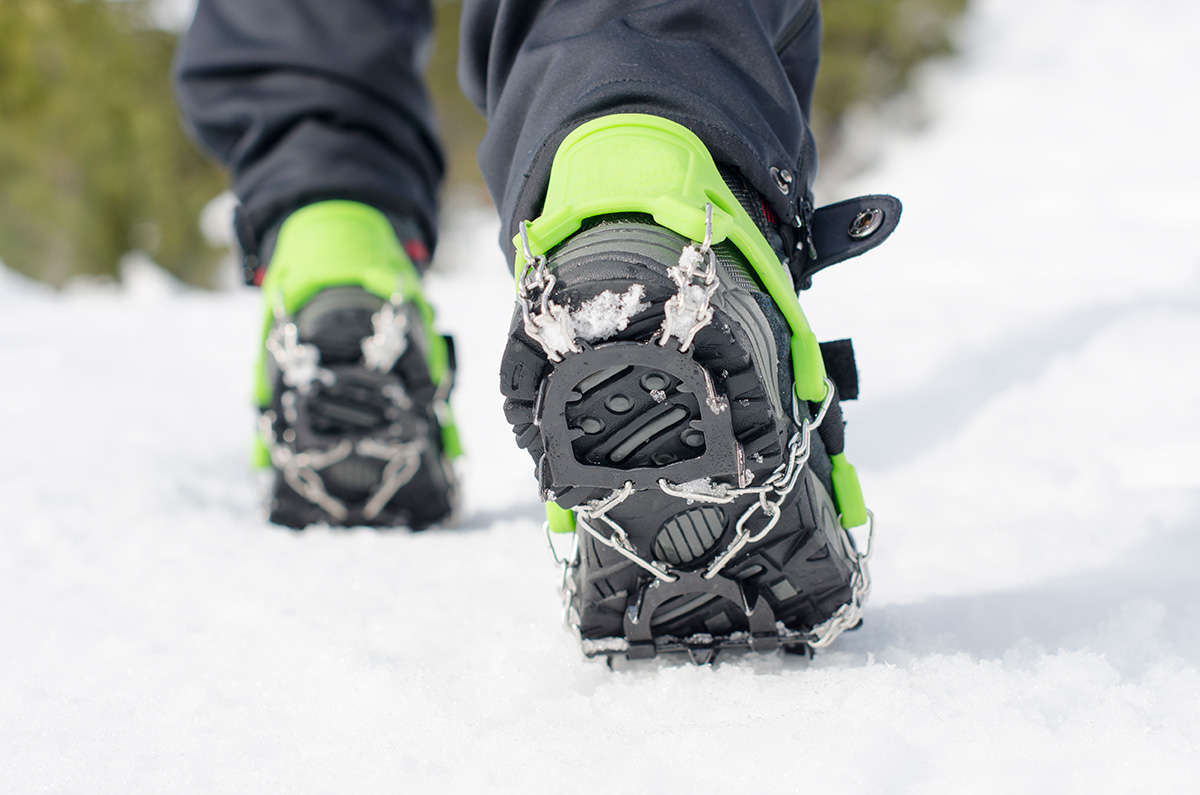
Speaking of ice, there are plenty of slippery areas on the mountain, so look for a boot with deeper lugs – the grooves in the rubber outsole.
Don’t go overboard, though! The deeper the lugs, the heavier the boot. If you follow our tips, you won’t rely on just your boot tread for traction anyway; we recommend bringing Yaktrax Diamond Grip Ice Cleats for when the trails get icy.
Weight
There is no right or wrong weight for your boot. Heavier boots are typically made of more durable materials, which are long-lasting and good for carrying heavier loads while backpacking.
But weight comes at a cost. You’ll expend more energy with every step, and they take longer to break in. Make note of the weight and choose a pair that suits your needs, making time to break in the more rugged options.
How do They Fit?
We can’t exaggerate how important it is to buy boots that fit correctly. If they don’t fit well, you shouldn’t buy them. Period. Loose boots will give you blisters. Tight boots will be uncomfortable from the get-go, especially during the descent.
Make sure your toes have a little excess space in the front and your heel doesn’t come up when you lift your foot off the ground. The extra space for your toes is important because your toes will slide forward in the boot during the descent. If they slam into the front of the boot, it will cause a lot of discomfort throughout the day.
Think very carefully about how they feel around every area of your foot and remember to wear your hiking socks when you’re trying them on. Test them out several times on an incline going up and down and make sure your foot doesn’t slide too much in the boot.
Break Them in Now
It’s never too early to break in a new pair of boots. We recommend hiking in them at least a few times before your trip and walking in them frequently.
At best, a fresh pair of boots will probably give you blisters on Kilimanjaro and a lot of discomfort. At worse, a boot that hasn’t been thoroughly tested on trails might fall apart on the mountain, which we’ve seen several times before.
Put in a few miles just to make sure they’re ready for Kilimanjaro.
Staff Recommendations
Still not sure where to start? Here are a few boot recommendations from Thomson’s hikers and Kilimanjaro summiteers.
Remember, what’s good for one person may not be good for another. Make sure your boots fit well first and foremost.
Salomon Quest Prime GTX – MEN | WOMEN
Sturdy, lightweight and surprisingly easy to break in, this pair of boots took staffer Erin up and down Kilimanjaro without a single blister or hotspot.
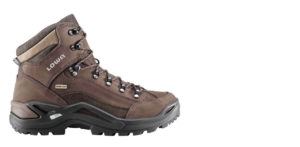
Lowa Renegade GTX – MEN | WOMEN
The summit of Kilimanjaro, the Inca Trails, the Canadian Rockies and beyond – Lowa Renegades have taken Thomson staffers just about everywhere. They’ve been staffer Eliza’s favorite hiking boots for five years, and Lowa’s best-selling style for over 20 years.
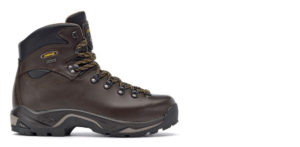
Asolo TPS 520 GV Evo – MEN | WOMEN
“So comfortable they practically walk themselves,” staffers Ali and Ina swear by Asolo’s hiking boots with leather uppers. The weight is just right. They’re incredibly durable, and, with time, the leather breaks in for a perfectly comfortable fit. Just make sure to waterproof your pair with Nikwax before tackling the trails.
Remember, regardless of a recommendation, you need to test your boots out before buying them on an incline and decline.

